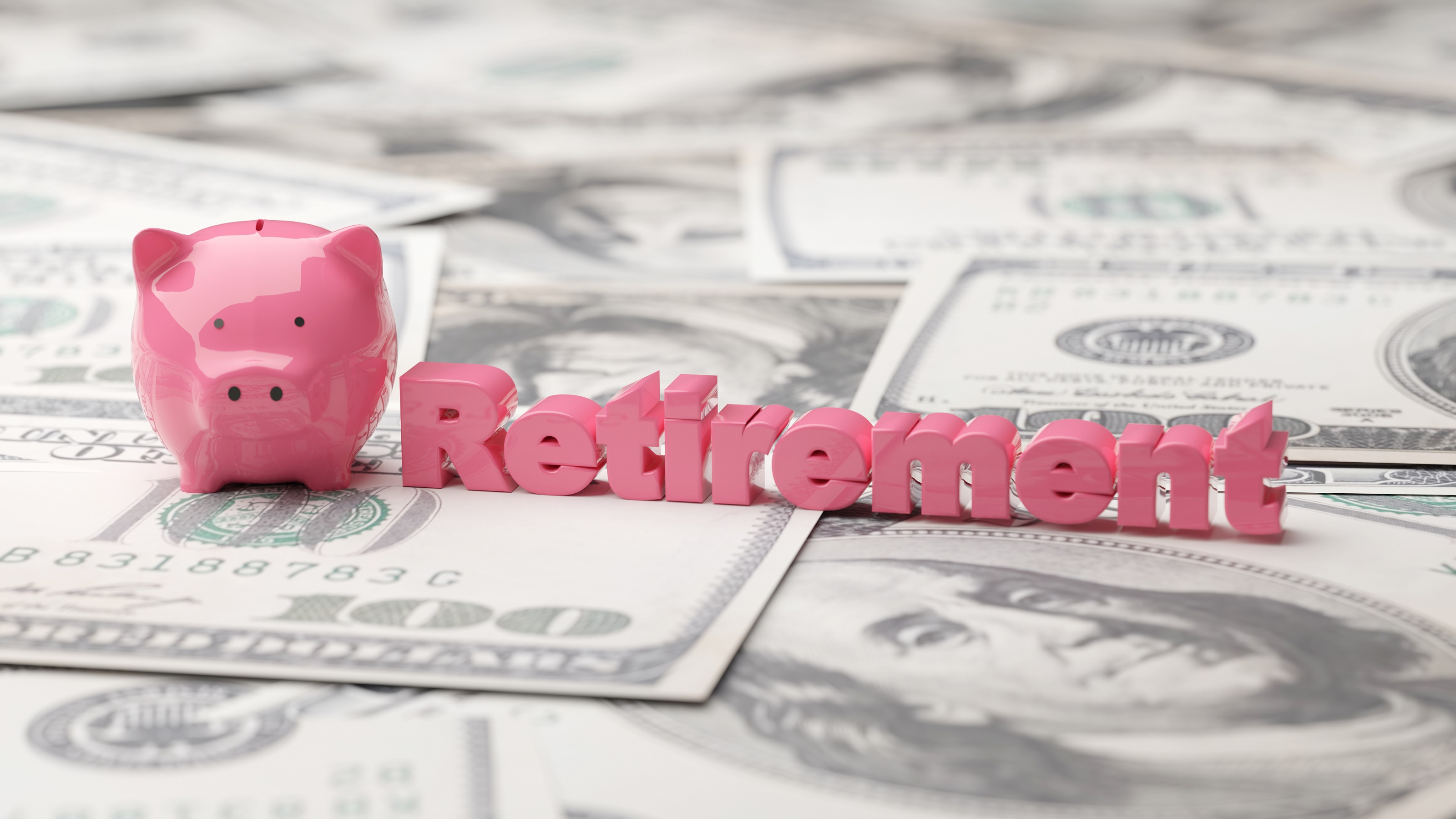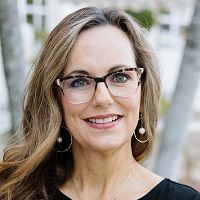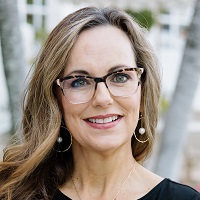How Building Liquidity Into Your Retirement Plan Can Pay Off
To succeed in investing for retirement, you need time and discipline — liquidity can give you both.


If you’re nearing retirement, you’re likely to be laser-focused on building up your retirement savings so you have enough to last throughout what could be a 25- to 30-year retirement.
All too often, however, those savings come at the expense of liquidity. You probably already know that liquidity involves short-term savings that you can access quickly when you need them.
In contrast, investments — especially those tied up in a workplace 401(k) account — are anything but liquid. To access those funds quickly, you might need to sell investments during less-than-ideal market conditions and potentially pay penalties to withdraw funds early from your retirement accounts.
From just $107.88 $24.99 for Kiplinger Personal Finance
Become a smarter, better informed investor. Subscribe from just $107.88 $24.99, plus get up to 4 Special Issues

Sign up for Kiplinger’s Free Newsletters
Profit and prosper with the best of expert advice on investing, taxes, retirement, personal finance and more - straight to your e-mail.
Profit and prosper with the best of expert advice - straight to your e-mail.
If you don’t have enough liquidity, you could be forced into that course of action or end up having to put expenses on high-interest credit cards.
However, when you divide your savings dollars between retirement accounts and liquid accounts such as bank savings accounts, brokerage money market funds or short-term certificates of deposit (CDs), you’ve covered your bases.
You are investing the money that you need for retirement, while also providing for your need for liquidity now and in retirement.
In this article, I’ll explain how building liquidity into your retirement planning can pay off by creating a cushion to cover your discretionary spending, emergency spending and other unexpected expenses, regardless of how your investments are performing. Liquidity can provide you with the ability to allow your investments to continue growing.
Liquidity needs before retirement
When you’re preparing for retirement, you need to keep your financial focus on both the present and the future. That means knowing that you have enough liquid savings to cover a potential job loss, upcoming known expenses and upcoming unknown expenses.
Ideally, you want three to six months of living expenses in the case of a job loss. If this sounds intimidating, you can revise that downward to whatever number seems reasonable and achievable. Maybe you have only one month of living expenses saved — in that case, you can aim over time to increase that amount until you have at least three months of expenses.
On top of that amount, add known expenses such as upcoming vacations, car replacement or home repairs and then a cushion for emergency expenses such as a car repair, appliance replacement or medical expense. These three categories, added together, are your liquid bucket.
Getting as close as you possibly can to filling up that liquid bucket before retirement is important, because this is just one of three buckets you will need in retirement. The other two are income and growth.
Liquidity in retirement
When you transition to retirement, while you may not have to worry about losing a job anymore, the need for liquidity remains.
In retirement, your liquid bucket should contain the amount you feel comfortable having for emergencies, plus any known expense over the next three years, outside of your regular living expenses. Adequate liquidity can cushion you against risk.
When you have enough in your liquid bucket, you increase your ability to ride out bear markets, economic recessions or political turmoil.
Once you are confident that your living expenses can be covered by your income sources and that additional emergency or discretionary expenses can be covered by your liquid savings, you can relax. Need a new car in two years? No worries, because ideally, you’ve already put that money aside.
When the markets are down, you can breathe easier, knowing that you’re prepared to pay your bills, fund your vacations, help your kids, replace your washing machine … or address other unexpected expenses.
When markets are up, you can replenish your liquid savings by selling stocks, bonds, mutual funds or other investments at more favorable prices. It’s even better if those sales are part of your long-term investment and tax strategy.
Time to build liquidity
Planning for retirement can be overwhelming. But when you know what you need to aim for — a mix of liquid and growth-oriented savings — you can feel more confident that you are adequately prepared and will be able to enjoy your next chapter.
Amy Buttell contributed to this article.
Insight Wealth is a team of EverSource Wealth Advisors, LLC, a Registered Investment Advisor.
This article is general in nature and does not take your personal circumstances into consideration. You should not assume that any discussion or information contained in this article is personalized investment advice, an offer to sell or a solicitation of an offer to buy any security, or a recommendation that you purchase, sell, or hold any security or other investment, or pursue any investment style or strategy.
Licensed Insurance Professional. The statements and opinions expressed are those of the author and are subject to change at any time. Provided content is for overview and informational purposes only.
Related Content
- Retirement Savings on Track? How Much You Should Have by 55 and 60
- The 'Concerning Trends' in Retirement Now
- The 'Die With Zero' Rule of Retirement
- Is 2025 a Bad Year to Retire?
- The Three Biggest Fears Keeping Retirees Up at Night
Profit and prosper with the best of Kiplinger's advice on investing, taxes, retirement, personal finance and much more. Delivered daily. Enter your email in the box and click Sign Me Up.

It wasn’t until a major life event that Samantha realized a desire to understand and set up her own financial future. That transitional experience helps her remember that financial topics can be intimidating and confusing, especially for those unfamiliar with industry lingo. Once Samantha became educated and equipped in her own finances, she wanted to serve others by giving insight for their financial futures. She specializes in working with successful single women who want a vibrant financial future.
-
 5 Gifts the IRS Won’t Tax: Even If They’re Big
5 Gifts the IRS Won’t Tax: Even If They’re BigGift Tax Several categories of gifts don’t count toward annual gift tax limits. Here's what you need to know.
-
 The 'Scrooge' Strategy: How to Turn Your Old Junk Into a Tax Deduction
The 'Scrooge' Strategy: How to Turn Your Old Junk Into a Tax DeductionTax Deductions We break down the IRS rules for non-cash charitable contributions. Plus, here's a handy checklist before you donate to charity this year.
-
 IRS Says You Made a Tax Return Mistake? A New Law Could Help You Fight Back
IRS Says You Made a Tax Return Mistake? A New Law Could Help You Fight BackTax Law Updated taxpayer protections change what the IRS must explain on error notices and how long you have to respond.
-
 What You Need to Do With Your 401(k) Before 2025 Is Over
What You Need to Do With Your 401(k) Before 2025 Is OverBefore 2025 ends, check your 401(k) contributions, investments, and catch-up eligibility to lock in this year’s tax savings and employer match.
-
 I'm a Tax Attorney: These Are the Year-End Tax Moves You Can't Afford to Miss
I'm a Tax Attorney: These Are the Year-End Tax Moves You Can't Afford to MissDon't miss out on this prime time to maximize contributions to your retirement accounts, do Roth conversions and capture investment gains.
-
 I'm an Investment Adviser: This Is the Tax Diversification Strategy You Need for Your Retirement Income
I'm an Investment Adviser: This Is the Tax Diversification Strategy You Need for Your Retirement IncomeSpreading savings across three "tax buckets" — pretax, Roth and taxable — can help give retirees the flexibility to control when and how much taxes they pay.
-
 Dow Rises 497 Points on December Rate Cut: Stock Market Today
Dow Rises 497 Points on December Rate Cut: Stock Market TodayThe basic questions for market participants and policymakers remain the same after a widely expected Fed rate cut.
-
 I'm Retired With $2.2 Million Saved and Work 2 Retail Shifts a Week for Fun. My Young Colleague Just Got Her Hours Cut. Should I Quit So She Can Have My Shifts?
I'm Retired With $2.2 Million Saved and Work 2 Retail Shifts a Week for Fun. My Young Colleague Just Got Her Hours Cut. Should I Quit So She Can Have My Shifts?Should she quit her job so a struggling young colleague can take her shifts? We asked certified financial planners for advice.
-
 Could an Annuity Be Your Retirement Safety Net? 4 Key Considerations
Could an Annuity Be Your Retirement Safety Net? 4 Key ConsiderationsMore people are considering annuities to achieve tax-deferred growth and guaranteed income, but deciding if they are right for you depends on these key factors.
-
 I'm a Financial Pro: Older Taxpayers Really Won't Want to Miss Out on This Hefty (Temporary) Tax Break
I'm a Financial Pro: Older Taxpayers Really Won't Want to Miss Out on This Hefty (Temporary) Tax BreakIf you're age 65 or older, you can claim a "bonus" tax deduction of up to $6,000 through 2028 that can be stacked on top of other deductions.
-
 JPMorgan's Drop Drags on the Dow: Stock Market Today
JPMorgan's Drop Drags on the Dow: Stock Market TodaySmall-cap stocks outperformed Tuesday on expectations that the Fed will cut interest rates on Wednesday.